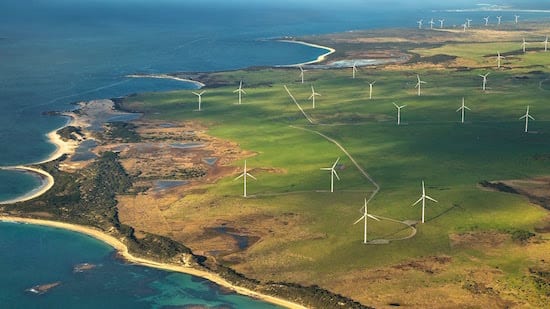Tasmania wind blows hard in October, as renewables beat coal again and batteries beat pumped hydro

Giles Parkinson
Nov 3, 2025
Battery
Chart of the day
Pumped Hydro
Renewables
Solar
Wind
Wind farms in Tasmania have again dominated the rankings as renewables and storage posted new production records in the month of October, with the share of renewables besting 50 per cent on a monthly basis for the first time.
According to David Dixon, a senior analyst at Rystad Energy, total renewables production in Australia’s main grid reached a record 9.07 terrawatt hours, beating the previous record of 8.52 TWh set in December last year, and exceeding 50 per cent of the NEM’s generation on a monthly basis for the first time.
Dixon says the share of renewables was 50.4 per cent, and beat coal (46.4 per cent) for the second month in a row. In Victoria, coal output fell to just 1.9 TWh, its lowest level since the NEM was created in 1998.

The best performing assets were once again in Tasmania, where the worst performing wind farm still had a capacity factor (CF) of 48.9 per cent over the month – better than several major coal generators.
The Musselroe wind farm led the way with a CF of 58.1 per cent, according to Rystad, followed by Cattle Hill (57.4% CF) and Granville Harbor (55.0% CF).
For utility PV, the best performing assets were the Merredin solar farm (38.3% CF) in Western Australia, and the Greenough River (35.4% CF), both in Western Australia, and the Moura solar farm (34.8% AC CF) in Queensland. Greenough River was the country’s very first solar farm, although it has been expanded since.

There were a couple of other milestones of note, including charging from utility batteries in the NEM exceeding 200 GWh on a monthly basis for the first time, and overtaking charging from pumped hydro (190 GWh) for the fourth month this year.
Dixon also notes there were 1,118 hours of negative prices across the NEM in the month of October, with South Australian leading the way with 324 hours (more than 10 hours a day on average), followed by Victoria (290 hours) and NSW (181 hours)
reneweconomy.com.au
My comments:
Isn't it great.
Batteries getting paid to charge up then sell the electricity later in the day and make big $$$ in the process!
The same for electric cars that are plugged in.
Arbitrage on steroids!
Impossible for fossil fueled generation to do that!
Eric |







